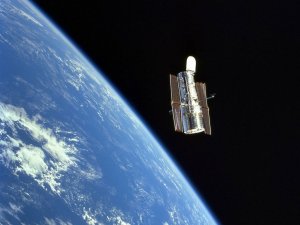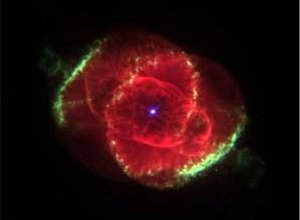Hubble Space Telescope (HST)

Credit: NASA/HST
The Hubble Space Telescope (HST) is one of the largest space telescopes. It was designed and built by NASA and ESA. Since 1990, HST has made more than 1.5 million observations. These have given us awe-inspiring views of space as well as changing our understanding of our Universe.
The Earth's atmosphere can blur the light we get from space. It also blocks some wavelengths of light. We get the best view of the Universe from telescopes which are above the Earth's atmosphere. This is why the HST is about 600 km above the Earth's surface. It travels at about 27,000 km per hour and orbits the Earth every 95 minutes.
HST was launched on the NASA space shuttle Discovery in 1990. Between 1993 and 2009, astronauts visited HST 5 times to maintain and improve it.
Hubble sees visible, ultraviolet and infrared light. Light enters the telescope and hits the 2.4 metre primary mirror. The light is then reflected to a smaller mirror which focuses the light on to one of its science instruments.

Credit: NASA/HST
Hubble highlights:
- Revealing the births and deaths of stars in detail.
- Watching a comet and an asteroid hit Jupiter.
- Finding planet forming zones around young stars.
- Studying how galaxies merge and change over time
- Mapping dark matter in space using gravitational lensing.

